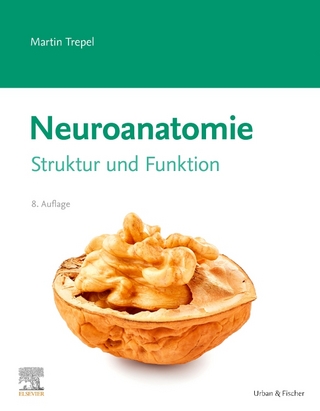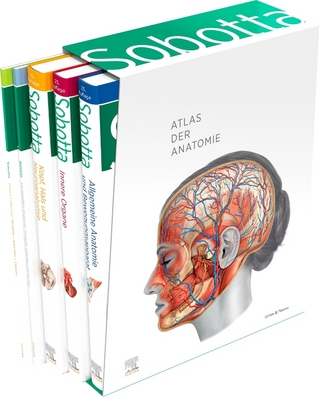
Methods of Cell Separation
Kluwer Academic/Plenum Publishers (Verlag)
978-0-306-34604-0 (ISBN)
- Titel ist leider vergriffen;
keine Neuauflage - Artikel merken
Therefore, the purpose of this open-end treatise is to acquaint the reader with some of the basic principles, instrumentation, and procedures pres- ently in practice at various laboratories around the world and to present some typical applications of each technique to particular biological prob- lems. To this end, I was fortunate to obtain the contribution of certain leading scientists in the field of cell separation, people who in their pioneer- ing work have struggled with the particular problems involved in separating living cells and in some way have won.
1 Preparative Density Gradient Electrophoresis and Velocity Sedimentation at Unit Gravity of Mammalian Cells.- I. Density Gradient Electrophoresis.- A. Introduction.- B. Apparatus and Procedures.- C. Velocity of Cell Transport.- D. Applications.- II. Velocity Sedimentation at Unit Gravity.- A. Introduction.- B. Experimental Procedures.- C. Considerations and Interpretations.- D. Separation of Human Blood Cells.- III. Conclusions.- References.- 2 Isopycnic Separation of Cells and Cell Organelles by Centrifugation in Modified Colloidal Silica Gradients.- I. Introduction.- II. Preparations of Colloidal Silica.- III. Methodology.- A. Formation of Gradients.- B. Selection of Centrifuge and Rotors.- C. Running Conditions.- D. Fractionation of Gradients.- E. Data Analysis.- F. Removal of Gradient Material.- IV. Centrifugation of Cells.- A. Separation of Cells.- B. Buoyant Densities of Cells.- C. Properties of Isolated Cells.- V. Centrifugation of Subcellular Particles.- A. Buoyant Densities of Subcellular Particles.- B. Size Limit for Banding in Silica Gradients.- C. Purification of Various Subcellular Particles.- VI. Concluding Remarks.- References.- 3 Dielectrophoresis: Applications to the Characterization and Separation of Cells.- I. Introduction.- II. Mechanism of Nonuniform Field Effects and Dielectrophoresis.- III. Polarization Mechanisms in Biological Materials.- A. Bulk Polarization Processes.- B. Interfacial and Space Charge Polarization Processes.- IV. Experimental Collection and Separation of Cells.- A. Methods and Procedures.- B. Observations on Yeast, Saccharomycescerevisiae.- C. Experiments on Canine Blood Platelets.- D. Experiments on Red Blood Cells.- E. Experiments on Chloroplasts.- F. Mitochondria Experiments.- G. Observations on Bacteria.- H. The Construction of Oriented Living Cell Masses.- I. Single Cell Dielectrophoresis.- J. Continuous Separations of Cells by Dielectrophoresis.- References.- 4 Separation of Viable Cells by Velocity Sedimentation in an Isokinetic Gradient of Ficoll in Tissue Culture Medium.- I. Introduction.- II. Historical Development of Technique.- III. Isopycnic Sedimentation.- IV. Velocity (Including Isokinetic) Sedimentation in Ficoll Gradients.- A. Velocity Sedimentation Prior to the Development of the Isokinetic Gradient.- B. Isokinetic Gradient.- V. Selected Theoretical Considerations.- A. Medium for Velocity Sedimentation.- B. Properties That Determine Rate of Sedimentation.- C. Misuse of Velocity Sedimentation to Determine Size.- VI. Critical Analysis of Data from Experiments in Cell Separation.- A. Characterization of Starting Sample.- B. Recovery.- C. Expression of Purification.- D. Morphology.- References.- 5 Fractionation and Manipulation of Cells with Chemically Modified Fibers and Surfaces.- I. Introduction.- II. Affinity Fractionation of Cells.- III. Fiber Fractionation of Cells.- IV. Manipulation of Cells and the Study of Localized Perturbations at the Cell Surface.- V. Procedures.- A. Preparation of Chemically Modified Fibers and Surfaces.- B. Preparation of Cell Suspensions.- C. Binding of Cells to Fibers.- D. Observation and Quantitation of Bound Cells.- E. Removal of Cells from the Fiber.- VI. Applications.- A. Fractionation of Lymphoid Cell Populations.- B. Binding of Cells to Antibody- or Lectin-Coated Fibers.- C. Studies on Fiber-Cell Interactions.- D. Cell Agglutination Induced by Lectins.- E. Studies of Adhesion among Neural Cells of the Chick Embryo.- F. Isolation of Membrane Fragments and Receptors.- VII. Prospective Applications.- References.- 6 The Separation of Lymphoid Cells on the Basis of Physical Parameters: Separation of B- and T-Cell Subsets and Characterization of B-Cell Differentiation Stages.- I. Introduction.- II. Separation of B from T Lymphocytes.- A. Electrophoretic and Adherence Separation.- B. Sedimentation and Buoyant Density Separation.- III. Separation of Functionally Distinct B-Lymphocyte Subsets.- A. The General Approach Leading to a Model of B-Cell Development.- B. Electrophoretic and Adherence Column Characterization of Adult Mouse Virgin and Memory AFC Progenitors and of AFC.- C. Sedimentation Rate Analysis of Adult Mouse Virgin and Memory AFC Progenitors.- D. Density Distribution Analysis of Adult Mouse Spleen Virgin and Memory AFC Progenitors.- E. The Characteristics of Newborn, Unstimulated Virgin AFC Progenitor B Cells.- IV. General Conclusions.- V. Appendix: Technical Aspects of the Separation Procedures.- A. General Points, Preliminary Cell Preparation, and Damaged Cell Removal.- B. Electrophoretic Separation.- C. Density Separation.- D. Sedimentation-Velocity Separation.- E. Adherence Separation.- References.- 7 Multiparameter Analysis and Sorting of Mammalian Cells.- I. Introduction.- A. Historical Background of Instrumentation Development.- B. Recent Applications of Flow Analysis and Sorting.- II. Description of the LASL Multiparameter Cell Separator.- A. Principle of Analysis and Separation.- B. Flow Chamber.- C. Laser-Beam-Shaping Optics and Wavelength Considerations.- D. Cell Sensing Methods.- E. Signal Processing.- F. Cell Separation Logic.- III. Examples of Multiparameter Cell Analysis and Sorting Applications.- A. Separation of [3H] Thymidine-Labeled Cells Based on DNA Measurements.- B. Analysis and Separation of Tumor Cells Based on DNA and Cell Volume Measurements.- C. DNA and Cell Volume Analysis of Drug-Treated Cultured Cells.- D. Analysis of the Cell-Surface Density of Lectin Binding to Cultured Cells.- E. Differential Analysis and Separation of Mammalian Leukocytes.- F. Measurement of Nuclear and Cytoplasmic Diameter in Single Cells.- G. Cell Characterization by Multiangle Light Scatter.- IV. Summary and Conclusions.- References.- 8 Partition of Cells in Two-Polymer Aqueous Phases: A Surface Affinity Method for Cell Separation.- I. Introduction.- A. Usefulness.- B. Background.- C. Properties of the Phases.- D. Partition of Cells.- E. Properties of the Cells Measured by Partition.- II. Methods.- A. Preparation of Cells for Partition.- B. Stock Solutions.- C. Phase Systems.- D. Partition.- E. Phase Selection.- F. Countercurrent Distribution.- III. Results.- A. Separation of Cells.- B. Subfractionation of Cell Populations and Tracing Membrane Changes That Occur as a Function of Normal or Abnormal inVivo Processes.- C. Membrane Alterations Due to inVitro Treatments.- IV. Conclusion.- References.
| Reihe/Serie | Biological Separations |
|---|---|
| Sprache | englisch |
| Themenwelt | Medizin / Pharmazie ► Physiotherapie / Ergotherapie ► Orthopädie |
| Studium ► 1. Studienabschnitt (Vorklinik) ► Anatomie / Neuroanatomie | |
| Naturwissenschaften ► Biologie ► Zellbiologie | |
| Technik ► Medizintechnik | |
| ISBN-10 | 0-306-34604-4 / 0306346044 |
| ISBN-13 | 978-0-306-34604-0 / 9780306346040 |
| Zustand | Neuware |
| Informationen gemäß Produktsicherheitsverordnung (GPSR) | |
| Haben Sie eine Frage zum Produkt? |
aus dem Bereich


